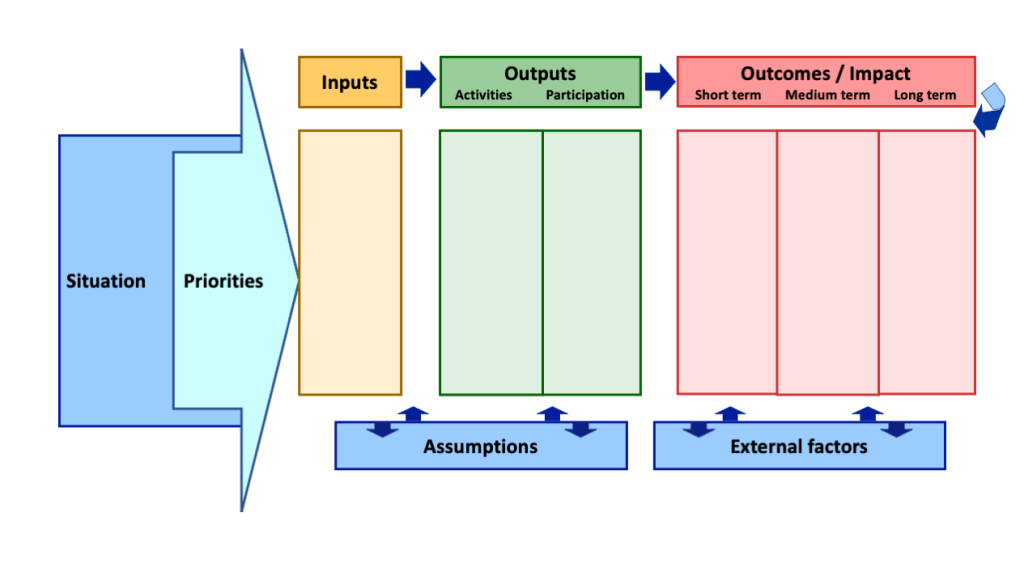Introduction / Overview
This course provides a holistic approach to planning and evaluating education and outreach programs. It helps program practitioners use and apply logic models – a framework and way of thinking to help us improve our work and be accountable for results. You will learn what a logic model is and how to use one for planning, implementation, evaluation or communicating about your program.

Logic Model Basics
The logic model is a framework and a way of thinking that helps us design results-based programs and have data to answer important questions. “What difference are you making? How do you know it? What is the value of your program?” Do these questions sound familiar? Are they questions you are being asked?
Course Structure
This course has 7 sections. We start with a basic, simple concept and add to it over the various sections to provide a thorough foundation in the use of logic models. Each section contains many useful resources and activities. We hope you will explore them fully. We’d be glad to hear your reactions and comments.
Section 1: What is a Logic Model?
Section 2: More about Outcomes
Section 3: More about Your Program “Logic”
Section 4: What Does a Logic Model Look Like?
Section 5: How Do I Draw a Logic Model?




